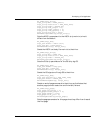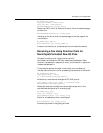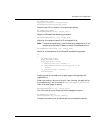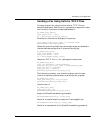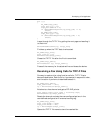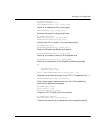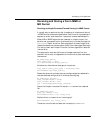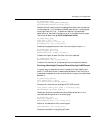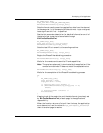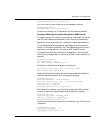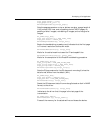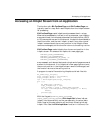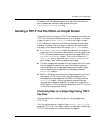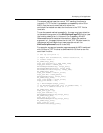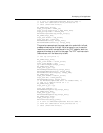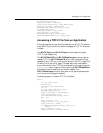
Developing a Fax Application
November 2009 80
BT_ZERO(args_fax);
args_fax.fmt = FMT_MR_UNALIGN_MSB;
BfvFaxSetReceiveFmt(lp,&args_fax);
Sets the format used to pass the received fax data from the channel
to the computer. In this example, MR data format – byte unaligned,
least significant bit first – is specified.
See the fmt parameter description for detailed information on all of
the data format types that are available through
BfvFaxSetReceiveFmt.
BT_ZERO(args_fax);
args_fax.local_id = "Id_string";
BfvFaxSetLocalID(lp,&args_fax);
Sets the local ID to transmit to the sending machine.
BT_ZERO(args_fax);
BfvFaxBeginReceive(lp, &args_fax);
Begins the Phase B handshaking procedure.
BfvFaxGetRemoteInfo(lp, &args_fax);
Waits for the remote end to send its ID and capabilities.
Note: The previous phone call is terminated by the application if the
remote fax machine's ID does not match the expected value.
BfvFaxWaitForTraining(lp, &args_fax);
Waits for the completion of the Phase B handshaking process.
do
{
BT_ZERO(args_fax);
args_fax.buf = buf;
args_fax.size = size;
/* receive data into buffer */
if (BfvFaxReceiveData(lp,&args_fax) <= 0)
break;
/* Process buffer contents */
Process(buf);
}
Keeping track of the resolution and the data format (previously set
by BfvFaxSetReceiveFmt) of each page, is the application's
responsibility.
When the function returns a 0 at exit from the loop, the application
must determine, from the value of args_fax.expect_another, if
there is another page to receive.



